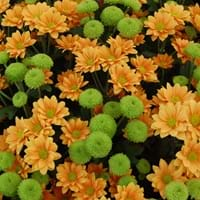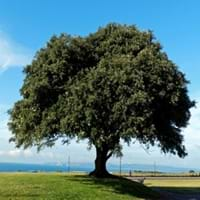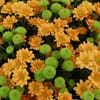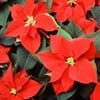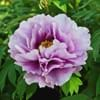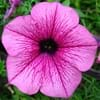Life Span
Perennial
Perennial
Origin
Asia, Northeastern Europe
Southern Europe, Mediterranean, Northern Africa
Types
Garden mum, Tricolor chrysanthemum, Indian chrysanthemum, Corn marigold
Quercus ilex, Quercus rotundifolia
Habitat
By seashore, Grassland, Thickets
Mediterranean region
USDA Hardiness Zone
3-9
4-8
Sunset Zone
1a, 1b, 2a, 2b, 3a, 3b, 4, 5, 6, 7, 8, 9, 10, 11, 12, 13, 14, 15, 16, 17, 18, 19, 20, 21, 22, 23, 24
4, 5, 6, 7, 8, 9, 10, 11, 12, 13, 14, 15, 16, 17, 18, 19, 20, 21, 22, 23, 24
Habit
Clump-Forming
Oval or Rounded
Flower Color
Burgandy, Green, Lavender, Orange, Pink, Purple, Red, Salmon, White, Yellow
Red, Yellow green
Flower Color Modifier
Bicolor
Bicolor
Fruit Color
Brown, Not Available
Brown, Sandy Brown, Chocolate
Leaf Color in Spring
Dark Green
Green, Dark Green
Leaf Color in Summer
Green, Sea Green
Dark Green
Leaf Color in Fall
Green, Sea Green
Dark Green
Leaf Color in Winter
Not Available
Dark Green
Leaf Shape
Ovate
Oblong or Lanceolate
Plant Season
Fall, Summer
Spring, Summer, Fall, Winter
Sunlight
Full Sun
Full Sun, Partial Sun
Type of Soil
Well drained
Clay, Loam, Sand
The pH of Soil
Neutral, Slightly Acidic
Acidic, Neutral, Alkaline
Soil Drainage
Well drained
Average
Bloom Time
Early Fall, Fall, Late Fall, Late Summer
Spring
Tolerances
Not Available
Pollution, Drought, Salt
Where to Plant?
Ground
Ground
How to Plant?
Grafting, Seedlings, Transplanting
Grafting, Seedlings
Plant Maintenance
Medium
Medium
Watering Requirements
Form a Soil ring to water efficiently, Over-watering can cause leaf problems or root diseases, Prefer drip-irrigation instead of Over-head watering, Requires regular watering, Use Mulches to help prevent water loss during hot and windy weather
Average Water Needs, Do Not over Water, Requires regular watering
In Summer
Lots of watering
Lots of watering
In Spring
Moderate
Moderate
In Winter
Average Water
Average Water
Soil pH
Neutral, Slightly Acidic
Acidic, Neutral, Alkaline
Soil Type
Well drained
Clay, Loam, Sand
Soil Drainage Capacity
Well drained
Average
Sun Exposure
Full Sun
Full Sun, Partial Sun
Pruning
Cut or pinch the stems, Prune for shortening long shoots, Prune if you want to improve plant shape, Prune in summer, Prune to control growth, Remove shoots
Remove damaged leaves, Remove dead branches, Remove dead leaves
Fertilizers
All-Purpose Liquid Fertilizer
fertilize in fall, Nitrogen, Phosphorous, Potassium
Pests and Diseases
Aphids, Botrytis head rot, Caterpillars, Cutworms, Powdery mildew, Rhizoctonia stem rot, Slugs, Spider mites, Thripes
Aphids, Disease free, Moth
Plant Tolerance
Drought
Pollution, Shade areas
Flowers
Yes
Insignificant
Flower Petal Number
Single
Not Available
Foliage Texture
Medium
Medium
Foliage Sheen
Matte
Glossy
Attracts
Butterflies
Birds, Insects
Allergy
Asthma, Eczema, Hay fever, Inflammation to sinuses or hives, Skin rash
Not Available
Aesthetic Uses
Beautification, Bouquets, Showy Purposes
Cottage Garden
Beauty Benefits
Not Available
Good for skin, Skin Problems
Environmental Uses
Air purification
Nesting sites for birds, Shadow Tree
Medicinal Uses
Chest pain, Diabetes, Headache, High blood pressure, Swelling
Digestive, Skin irritation
Part of Plant Used
Leaves
Bark, Fruits, Wood
Other Uses
Employed in herbal medicine, Used as Ornamental plant
Charcoal, Used as firewood, Used for its medicinal properties, Wood is used fore making tools
Used As Indoor Plant
No
No
Used As Outdoor Plant
Yes
Yes
Garden Design
Not Available
Feature Plant, Hedges, Screening / Wind Break, Shade Trees, Street Trees
Botanical Name
Chrysanthemums
QUERCUS ilex
Common Name
Chrysanths
Evergreen Oak, Holly Oak, Holm Oak
In Hindi
Chrysanthemums
होल्म ओक
In German
Chrysanthemen
Steineiche
In French
Chrysanthèmes
chêne vert
In Spanish
Crisantemos
encina
In Greek
χρυσάνθεμα
πρινόδενδρο
In Portuguese
Crisântemos
azinheira
In Polish
Chryzantemy
dąb skalny
In Latin
Chrysanthemums
ilice
Phylum
Magnoliophyta
Magnoliophyta
Class
Magnoliopsida
Magnoliopsida
Family
Asteraceae
Fagaceae
Genus
Chrysanthemum
Quercus
Clade
Not Available
Angiosperms, Eudicots, Rosids
Tribe
Anthemideae
Not Available
Subfamily
Not Available
Not Available
Importance of Chrysanthemum and Holm Oak
Want to have the most appropriate plant for your garden? You might want to know the importance of Chrysanthemum and Holm Oak. Basically, these two plants vary in many aspects. Compare Chrysanthemum and Holm Oak as they differ in many characteristics such as their life, care, benefits, facts, etc. Every gardener must at least have the slightest clue about the plants he wants to plant in his garden. Compare their benefits, which differ in many ways like facts and uses. The medicinal use of Chrysanthemum is Chest pain, Diabetes, Headache, High blood pressure and Swelling whereas of Holm Oak is Digestive and Skin irritation. Chrysanthemum has beauty benefits as follows: Not Available while Holm Oak has beauty benefits as follows: Not Available.
Compare Facts of Chrysanthemum vs Holm Oak
How to choose the best garden plant for your garden depending upon its facts? Here garden plant comparison will help you to solve this query. Compare the facts of Chrysanthemum vs Holm Oak and know which one to choose. As garden plants have benefits and other uses, allergy is also a major drawback of plants for some people. Allergic reactions of Chrysanthemum are Asthma, Eczema, Hay fever, Inflammation to sinuses or hives and Skin rash whereas of Holm Oak have Not Available respectively. Having a fruit bearing plant in your garden can be a plus point of your garden. Chrysanthemum has no showy fruits and Holm Oak has showy fruits. Also Chrysanthemum is flowering and Holm Oak is not flowering . You can compare Chrysanthemum and Holm Oak facts and facts of other plants too.
